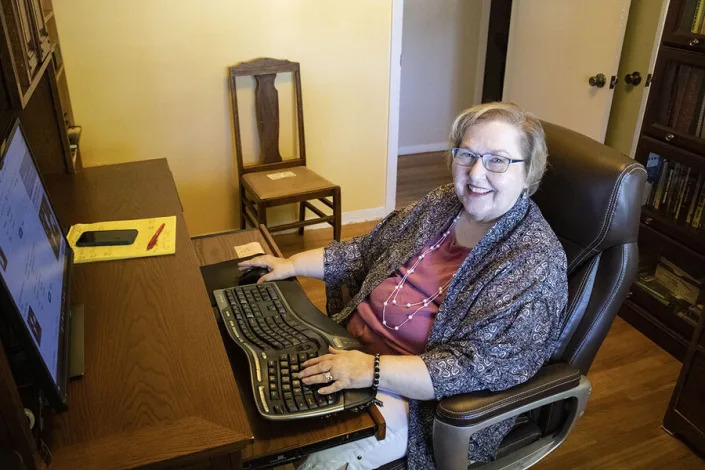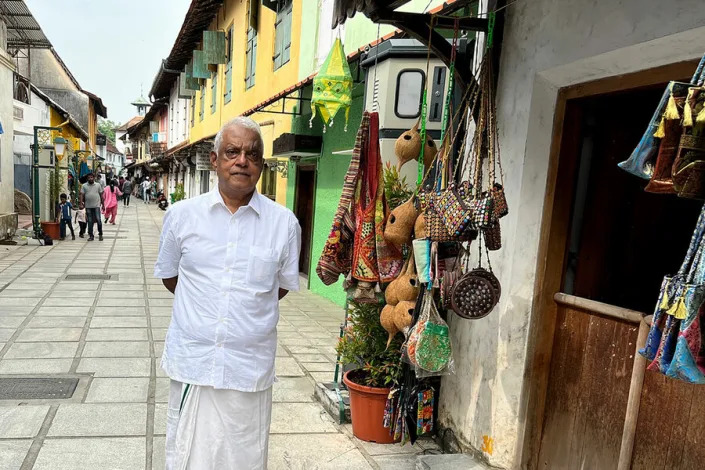CRIMINAL CRYPTO CAPITALI$M TOO
BlockFi Creditors Battle to Keep Their Details Secret
krisanapong detraphiphat
Jack Schickler
Wed, January 11, 2023
BlockFi creditors are seeking to keep their personal details secret, arguing in a Tuesday court filing that they will be at risk of hacks or identity theft if their names are revealed as part of bankruptcy proceedings.
Creditors of the bankrupt crypto lender are seeking to avoid a situation seen in the case of Celsius – where the financial details of hundreds of thousands of users were published as part of standard judicial procedure.
Andrew Vara, a U.S. Department of Justice official responsible for bankruptcy cases, argued in a separate Tuesday filing to the New Jersey bankruptcy court that “disclosure is a basic premise of bankruptcy law,” needed to avoid any suggestion of impropriety – echoing arguments he has previously made in the case of collapsed crypto exchange FTX.
A committee of BlockFi creditors said that giving away a valuable client list for free would reduce the value of the estate – and that publication would make them vulnerable to theft, noting that even experienced bitcoin developers such as Luke Dashr can be the subject of hacks.
In the case of FTX, the motion to publish the creditor list – which has been supported by media companies including Bloomberg and the New York Times – will be considered at a court hearing in Delaware later on Wednesday, Jan. 11, and judge Michael Kaplan is set to consider the BlockFi case at a Jan. 17 hearing.
Read more: Why Celsius Doxxed Hundreds of Thousands of Users
FTX Loan Wiped Out $800M in BlockFi Executives’ Equity, Court Filing Reveals

Jack Schickler
Thu, January 12, 2023
Executives from bankrupt crypto lender BlockFi granted themselves pay rises of as much as $275,000 each, after they saw $800 million in their equity holdings wiped out because of a loan from collapsed crypto exchange FTX, a court filing shows.
A statement of financial affairs for BlockFi, which was filed Thursday in the U.S. Bankruptcy Court for the District of New Jersey, contains thousands of pages of transactions that took place in the run-up to BlockFi's collapse. The firm had gross revenue of over $4 million for 2022 until its bankruptcy filing in November.
Last June, FTX offered BlockFi a $400 million loan, and Thursday's filing details the impact of the loan on 13 of BlockFi’s top executives.
“The massive impact of the FTX transaction on management equity led BlockFi’s board of directors to, among other things, increase base salaries and make retention payments for those that remained in the interest of retaining business critical knowledge and capabilities,” the filing stated.
Founder and CEO Zac Prince, for example, saw $413 million in equity value eliminated, and was compensated by a salary increase from $250,000 to $400,000, while Chief Operating Officer Flori Marquez saw a raise from $225,000 to $500,000, the filing said.
BlockFi lawyers have been at pains to stress that – unlike other crypto bankruptcy cases such as the one for lender Celsius Network – there were no last-minute panicky withdrawals by BlockFi senior executives before its collapse.
No member of the BlockFi management team withdrew any cryptocurrency from the platform after Oct. 14, the filing said, and the management team represented just 0.15% of the $7.7 billion in retail withdrawals over the year.
But the filings nonetheless reveal significant withdrawals made by senior management – including over $9 million taken out of the platform by Prince in April, which the filing said was to pay U.S. federal and state taxes, and his withdrawal of just over $870,000 in August.
Most transaction data is anonymized, with the court due to consider next week whether to unseal creditor information. In a parallel hearing Wednesday, a Delaware judge agreed FTX customer names can remain secret for three months.

Jack Schickler
Thu, January 12, 2023
Executives from bankrupt crypto lender BlockFi granted themselves pay rises of as much as $275,000 each, after they saw $800 million in their equity holdings wiped out because of a loan from collapsed crypto exchange FTX, a court filing shows.
A statement of financial affairs for BlockFi, which was filed Thursday in the U.S. Bankruptcy Court for the District of New Jersey, contains thousands of pages of transactions that took place in the run-up to BlockFi's collapse. The firm had gross revenue of over $4 million for 2022 until its bankruptcy filing in November.
Last June, FTX offered BlockFi a $400 million loan, and Thursday's filing details the impact of the loan on 13 of BlockFi’s top executives.
“The massive impact of the FTX transaction on management equity led BlockFi’s board of directors to, among other things, increase base salaries and make retention payments for those that remained in the interest of retaining business critical knowledge and capabilities,” the filing stated.
Founder and CEO Zac Prince, for example, saw $413 million in equity value eliminated, and was compensated by a salary increase from $250,000 to $400,000, while Chief Operating Officer Flori Marquez saw a raise from $225,000 to $500,000, the filing said.
BlockFi lawyers have been at pains to stress that – unlike other crypto bankruptcy cases such as the one for lender Celsius Network – there were no last-minute panicky withdrawals by BlockFi senior executives before its collapse.
No member of the BlockFi management team withdrew any cryptocurrency from the platform after Oct. 14, the filing said, and the management team represented just 0.15% of the $7.7 billion in retail withdrawals over the year.
But the filings nonetheless reveal significant withdrawals made by senior management – including over $9 million taken out of the platform by Prince in April, which the filing said was to pay U.S. federal and state taxes, and his withdrawal of just over $870,000 in August.
Most transaction data is anonymized, with the court due to consider next week whether to unseal creditor information. In a parallel hearing Wednesday, a Delaware judge agreed FTX customer names can remain secret for three months.














